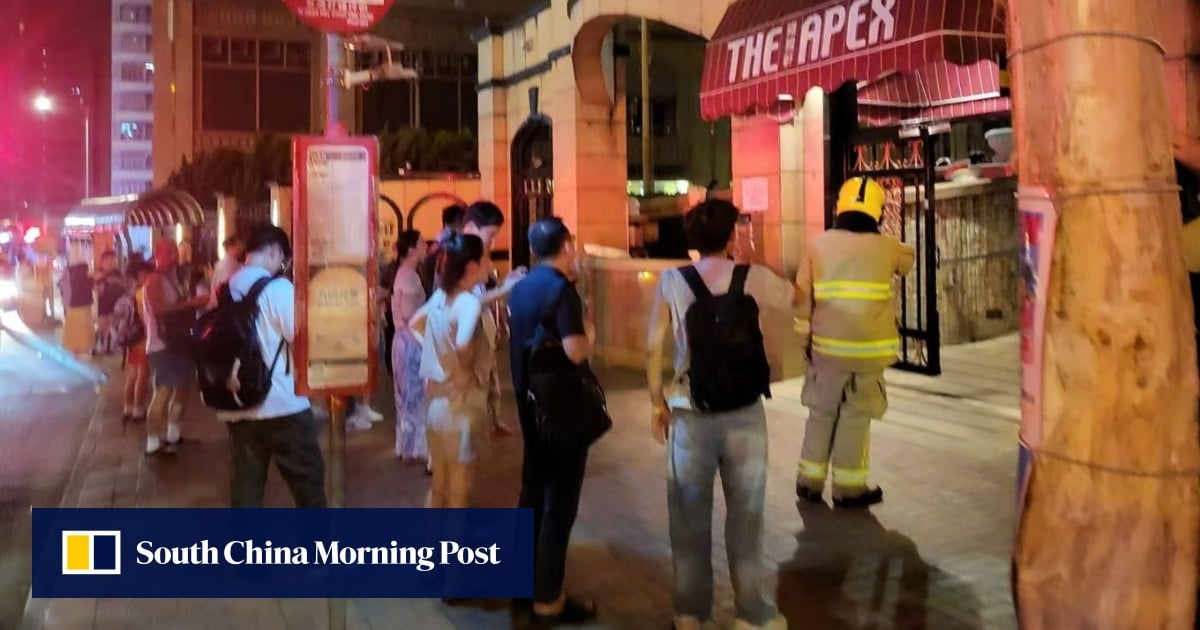CLN
Key News
Asian equities were largely lower, as Taiwan underperformed following ASML’s earnings miss yesterday, while Thailand and Indonesia managed to outperform.
Hong Kong and Mainland China bounced around the room throughout the day, despite US-listed China stocks being down significantly yesterday. The recent correction, following the massive stimulus-driven rally, paused on light volumes. Local investors are contemplating tomorrow’s 10 am press conference and Q&A to be held by multiple authorities, including the Ministry of Housing and Urban-Rural Development, the Ministry of Finance, Ministry of Natural Resources, and the People’s Bank of China (PBOC), China’s central bank. Leaders will discuss “the relevant situation of promoting the stable and healthy development of the real estate market”.
Not surprisingly, Real Estate was the top-performing sector in Hong Kong, where it was up +4.4%, and in Mainland China, where it was up 4.72%, though, within MSCI indices, there are just 6 Hong Kong real estate stocks and only 7 in Mainland China. That explains why I like the tasty yields on US dollar-denominated high-yield real estate bonds as a rebound play, though everyone keeps buying US high-yield and ignoring me. Chengdu is pushing through a big real estate and infrastructure development plan, while Mainland media noted that second-tier Chinese cities, including Nanjing and Chengdu, saw strong home buying during Golden Week.
There was a massive disparity between Hong Kong-listed stocks today and US-listed China stocks (ADRs) yesterday, which is leading to a bounce today. Hong Kong’s most heavily traded stocks by value were Tencent, down -0.29% versus its non-sponsored ADR which was down -4.91%, Meituan, up +1.41% versus its non-sponsored ADR which fell -5.42%, Alibaba, down -0.9% versus its ADR which fell -5.54%, and JD.com which fell -3.12% versus its ADR which fell -9.02%. That explains why we hold the stocks in Hong Kong and not the US! Other names were Kuaishou, down -2.32% versus its ADR which fell -20.58% (the ADR basically doesn’t trade as a FYI), Trip.com, down -1.89% versus its ADR which fell -8.83%, Li Auto, down -0.61% versus its ADR which fell -5.54%, Baidu, down -0.97% versus its ADR which fell -5.19%, and Bilibili, up +1.14% versus its ADR which fell -6.92%.
LVMH’s miss was cited as weighing on consumer plays. Southbound Stock Connect was a rare net sell today though Alibaba was back to being a net buy following yesterday’s first net sell day. ASML weighed on technology stocks in both Hong Kong and Mainland China, down -1.02% and -2.76%.
China isn’t going anywhere geographically or economically, though we are in a bit of a TINA (there is no alternative for the government’s stimulus, housing prices, and getting investors back into the stock market.
How do you let Shanghai and Shenzhen fall after telling local citizens to buy? I don’t think you can. My recommendation: think about what’s coming down the road ahead through the windshield and not looking in the rear-view mirror.
Reuters had a great indicator of how far along we are in the China equity rally. Reuters interviewed former CIO of the $347 billion California State Teachers Retirement System (CALSTERS), Christopher Ailman, who is the Chairman of the North American chapter of the 300 Club, a group of US and European pension and asset managers. In a recent 300 Club meeting, named ironically for the 300 Spartans who fought the Persians at Thermopylae back in 480 BC.
Ailman said that “Money managers on the call agreed that the prices of certain Chinese stocks looked attractive from the technical and fundamental perspectives, but no one indicated they were increasing their Chinese investments.“
He added that, despite this, “No one wants to go rushing in before the U.S. election.”
Which China stocks in particular do investors find attractive? C’mon, it ain’t banks, energy, materials, or industrials that look attractive! I think it has to be the the “good stuff”, i.e., the growth names, which are predominantly listed in Hong Kong!
Have any of the 300 Club members bought the rally? Leonidas would be disappointed! The election? What are you afraid of? Trump wins? Do you really think 60% tariffs could be economic reality versus nothing more than campaign rhetoric? In fact, Trump said explicitly in an interview at the Economic Club of Chicago that tariffs are meant to get foreign companies to set up shop in the US and extract other concessions, not as a long-term policy!
Shouldn’t you be shorting Amazon, Walmart, Costco, and Home Depot if you believe 60% tariffs are coming because those companies are cooked without China?
Ailman also validated our thesis about the geographic rewind back into China, stating, “U.S. and Canadian funds were particularly “gun shy” about investing in China right now,” i.e., they will likely be the last ones back in. The first will be the Chinese buying of China, which is occurring based on the Southbound Stock flows from China into Hong Kong and the massive buybacks from the tech entrepreneur-founded internet companies. Next will be Asian investors likely taking a little profit from their historical overweight to US tech stocks, Japan, and India, and using that capital to dip their toes back into cheap China consumer, internet, and technology names.
This morning, Bank of America’s Global Fund Manager Survey noted that, “Global fund managers increased their allocation to China at India’s expense after Asia’s largest economy unleashed a stimulus package.” India’s average P/E is 24 versus China’s 11. This stunning valuation disparity was a factor as well, though it doesn’t mention India’s massive retail-driven stock option enthusiasm. At the end of the day, big strategic institutional rebalancing to rectify China’s underweights has not started yet or, at least, it is in the very early stages.
Privately held Xiao Hong Shu, which translates as “Little Red Book” and is often thought of as China’s Instagram, had a leak. The company did not release financial data, though it appears that it landed in the hands of some journalists and investors, likely due to preparation efforts, and security breaches, leading up to a potential IPO. More likely to come on this!
The Hang Seng and Hang Seng Tech indexes fell -0.16% and -1.09%, respectively, on volume that decreased -20.25% from yesterday, which is 176% of the 1-year average. 278 stocks advanced, while 212 declined. Main Board short turnover, which decreased by -40.18% from Thursday, which is 112% of the 1-year average, as 10% of turnover was short turnover (Hong Kong short turnover includes ETF short volume, which is driven by market makers’ ETF hedging). The value factor and large capitalization stocks outperformed the growth factor and small capitalization stocks. The top-performing sectors were Real Estate, which was up +4.39%, Materials, up +3.08%, and Financials, up +1.01%. Meanwhile, Consumer Staples fell -1.61%, Information Technology fell -1.03%, and Health Care fell -0.92%. The top-performing subsectors were food & beverage, real estate services, and media. Meanwhile, consumer services, consumer durables were among the worst-performing subsectors. Southbound Stock Connect volumes were high, 2X normal, as Mainland investors sold a net -$198 million worth of Hong Kong-listed stocks and ETFs, including Alibaba, which was a small net buy, and the Hong Kong Tracker ETF, which was a large net sell.
Shanghai, Shenzhen, and the STAR Board diverged to close +0.05%, -0.45%, and -2.57%, respectively, on volume that was down -15.84% from yesterday, which is 165% of the 1-year average. 2,154 stocks advanced, while 2,762 declined. The value factor and small capitalization stocks outperformed the growth factor and large capitalization stocks. The top-performing sectors were Real Estate, up 4.72%, Financials, up +1.37%, and Communication Services, up +1.01%, while Technology fell -2.76%, Healthcare fell -1.88%, and Consumer Discretionary fell -1.71%. The top-performing subsectors were real estate, water, and precious metals. Meanwhile, diversified financials, computer hardware, and semiconductors were among the worst-performing. Northbound Stock Connect volumes were high, at just over 2X the average. CNY and the Asia Dollar Index gained versus the US dollar. The Treasury bond curve flattened. Copper and steel fell.
New Content
Read our latest article:
Expanding the KraneShares Volatility Suite with KPRO & KBUF
Please click here to read
Last Night’s Performance
Chart1
Chart2
Chart3
Chart4
Chart5
Last Night’s Exchange Rates, Prices, & Yields
- CNY per USD 7.11 versus 7.11 yesterday
- CNY per EUR 7.74 versus 7.76 yesterday
- Yield on 10-Year Government Bond 2.13% versus 2.13% yesterday
- Yield on 10-Year China Development Bank Bond 2.22% versus 2.21% yesterday
- Copper Price -0.42%
- Steel Price -0.37%


